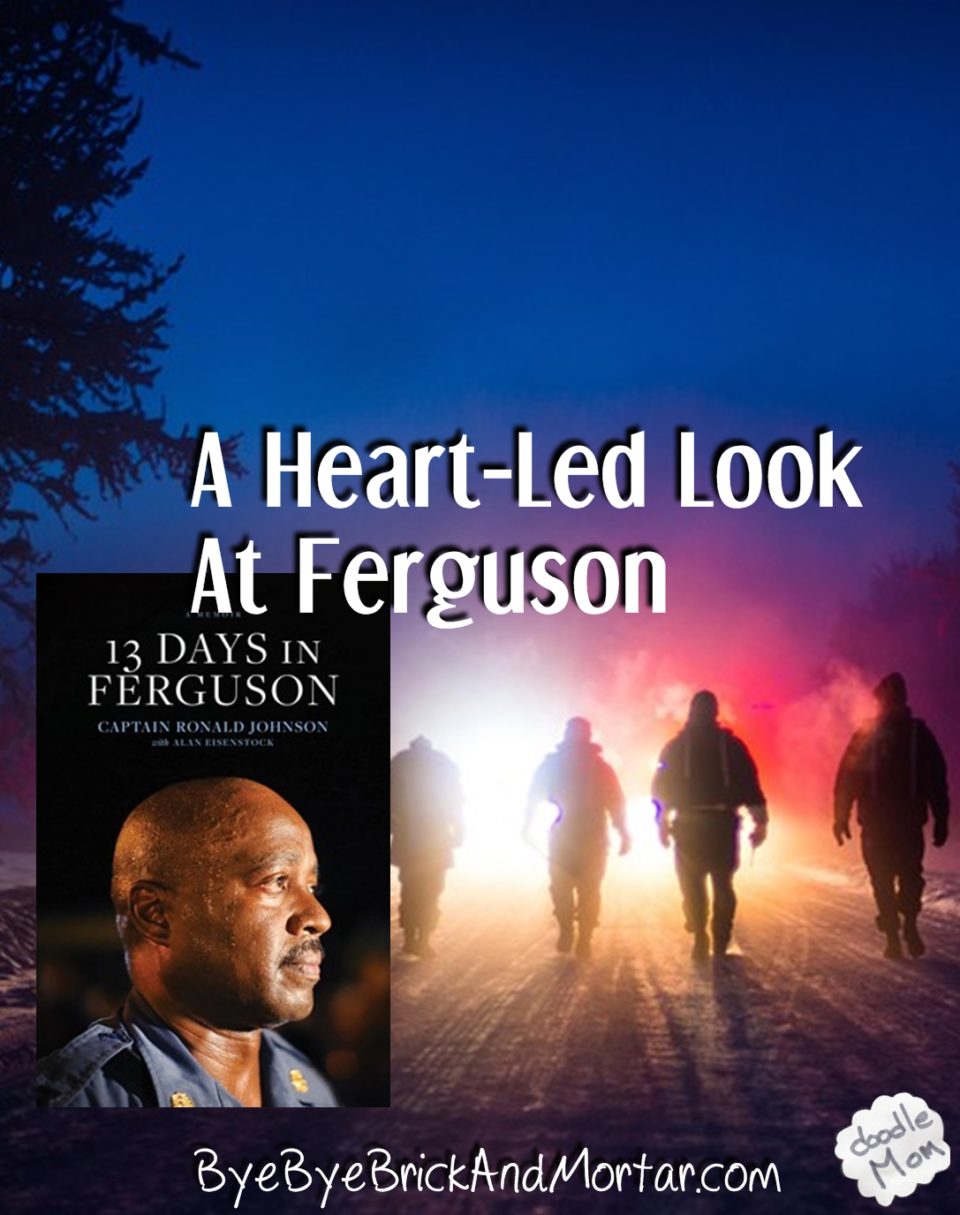I recently got the opportunity to read the account of the unrest in Ferguson in 2014 written by one of the men who was actually there. Not only was he there, but he was in charge, on the side of keeping order and protecting the people. The book is called 13 Days in Ferguson, but Captain Ronald Johnson.

This is a wonderful book to read with your high schooler. There is even a discussion section at the end of the book with questions to help lead a conversation with your child, chapter by chapter. It is a way to teach history as well as expand your child’s capacity for critical thinking and even to further understand his faith at the same time.
This is a story you did not read in the papers at the time. Captain Johnson’s work and attitudes did not fit the narrative. He did not want to blame any side in the conflict, or create further division. His goal was to unite.
His account is so thought-provoking that I had to sit on this review for a long time. I ended up reading the book over several times so I could really consider his account and conclusions. Back in that summer of 2014, I spent nights listening to the police radio feed from Ferguson in an attempt to discover the real story.
Which side was right?
But three sentences from Captain Johnson’s book stand out with the answer:
- “I see both sides.”
- “I belong to both sides.”
- “But there shouldn’t be sides.”
It is so easy to look for the quick answer these days. We hear about unrest and quickly come to judgement about one side or the other. The police were in the wrong, or the people were unreasonable. But the real answer I think is that there is wrong and unreasonableness on both sides of every issue. And there is right and truth on both sides as well. You just have to look harder and think more carefully to see it.
Approaching events like Ferguson carefully and without carrying a judgement to the discussion ahead of time is difficult. We all bring our experiences with us and those experiences shape and focus what we see and hear and read. I do think it is important, though, to try our best to listen to everything first before forming an opinion.
Publisher’s Summary
On August 14, 2014, five days after the fatal shooting of Michael Brown ignited race riots throughout the city of Ferguson, Missouri, the nation found an unlikely hero in Captain Ron Johnson of the Missouri Highway Patrol. Charged with the Herculean task of restoring peace between a hostile African American community and the local police, Johnson, a 30-year law enforcement veteran and an African American, did the unthinkable; he took off his bullet-proof vest and joined the protesters.
The 13 days and nights that followed were the most trying of Johnson’s life—professionally, emotionally, and spiritually. Officers in his own command called him a traitor. Lifelong friends stopped speaking to him. The media questioned and criticized his every decision. Alone at the center of the firestorm, with only his family and his faith to cling to, Johnson persevered in his belief that the only way to effectively bridge the divide between black and blue is to—literally—walk across it.
In 13 Days in Ferguson, Johnson shares, for the first time, his view of what happened during the thirteen turbulent days he spent stabilizing the city of Ferguson, and the extraordinary impact those two historic weeks had on his faith, his approach to leadership, and on what he perceives to be the most viable solution to the issues of racism and prejudice in America.
About The Authors
Book Details
13 Days in Ferguson
by Ron Johnson and Alan Eisenstock
Format: Hardback
304 Pages
Publisher: Tyndale House
Publication Date: August 7, 2018
ISBN: 1496424670
ISBN-13: 978-1-4964-1657-5
Price: $25.99